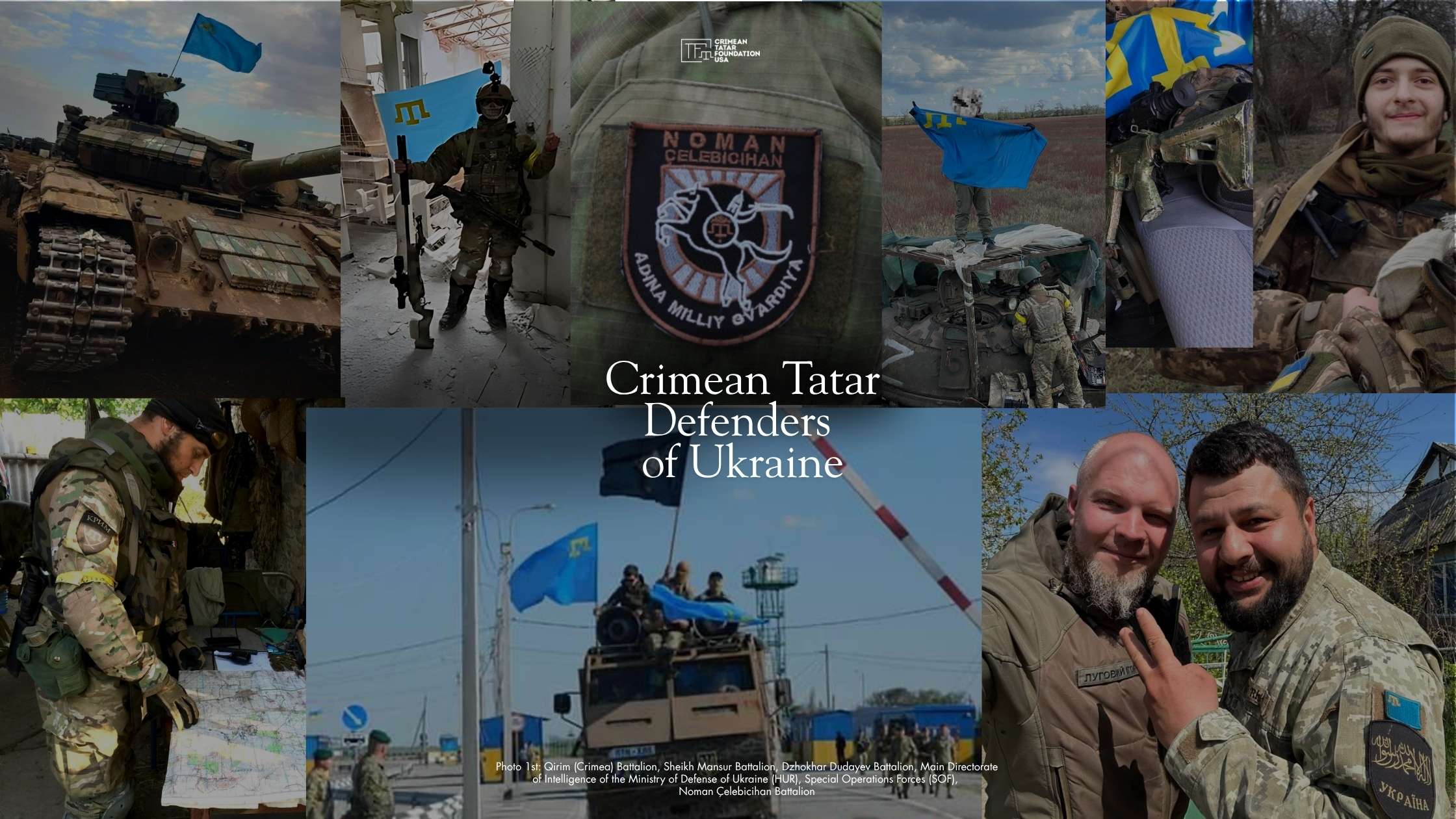September 27, 2025
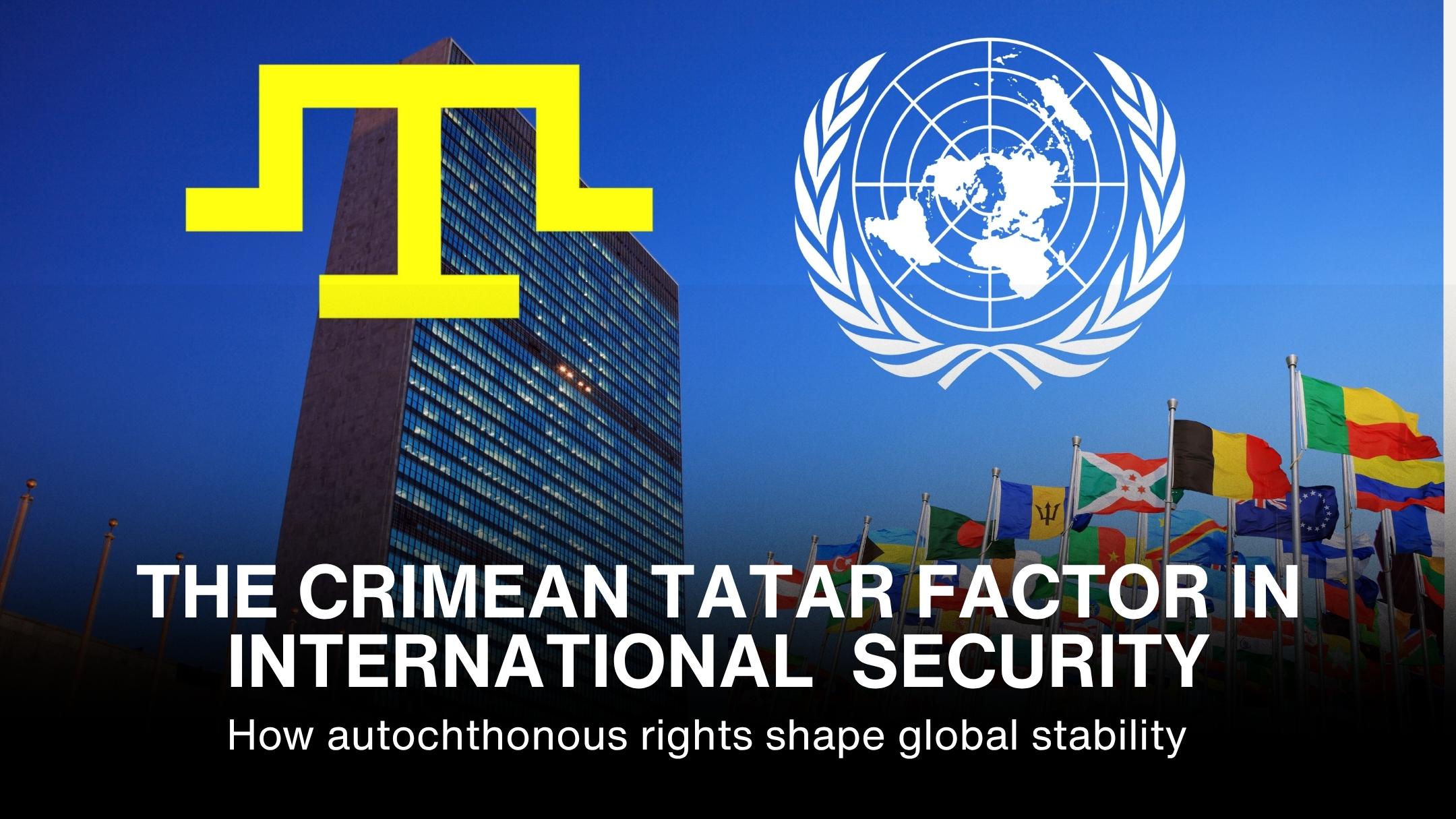
What makes this analysis particularly compelling is not merely its documentation of genocide, but the methodology it reveals – a complete cycle of colonial destruction that can be traced from the annihilation of statehood to attempted erasure of an entire nation from the world map. These methods, the CTF USA argues, are now being deployed in full measure across Ukraine.
The evidence suggests a deliberate pattern. Since Russia’s 2014 occupation of Crimea, the question loomed: would this territorial seizure satisfy the Kremlin’s ambitions? The answer came with brutal clarity in February 2022. Crimea, despite its symbolic, economic, and strategic value, was never the ultimate objective. Rather, it served as a stepping stone—a testing ground for methods that would later be applied on a far larger scale. The Kremlin’s true goal remains unchanged: to return Ukraine entirely to Moscow’s sphere of influence.
The Systematic Dismantling of Autochthonous Rights
The prohibition of the Mejlis – the highest representative body of Crimean Tatars -represents Russia’s classic preparatory stage of genocide. The pattern is deliberate: first deprive the Crimean nation of official representative power and legal protection, then gain freedom to commit mass crimes against a defenseless people.
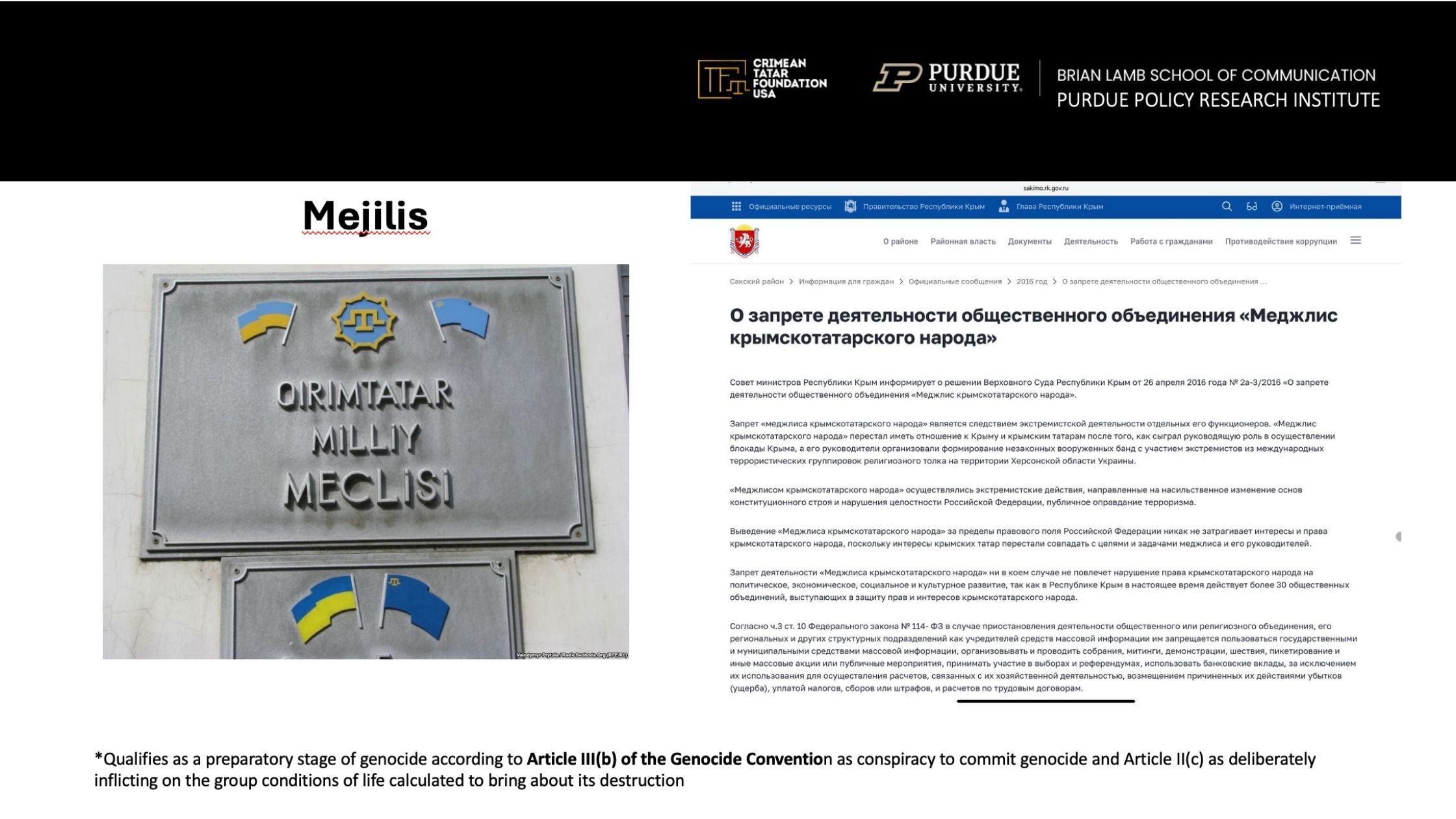
Since 2014, thousands of crimes have been documented: murders, torture, imprisonments, thefts and disappearances of Crimean Tatar activists, journalists, and civilians. The absence of constitutional entrenchment of the Mejlis in Ukrainian legislation deprives the indigenous nation of collective protection and transforms each member of the group into an individual target without institutional shield.
A Pattern Repeated Across Centuries
Russia’s historical methodology demonstrates a chilling pattern: Crimea has been illegally occupied three times. First time – by the Russian Empire in 1783, then the sovereign Crimean People’s Republic was illegally occupied by the USSR in 1918, and finally, Ukraine’s sovereign integrity was violated through russia’s illegal occupation in 2014.
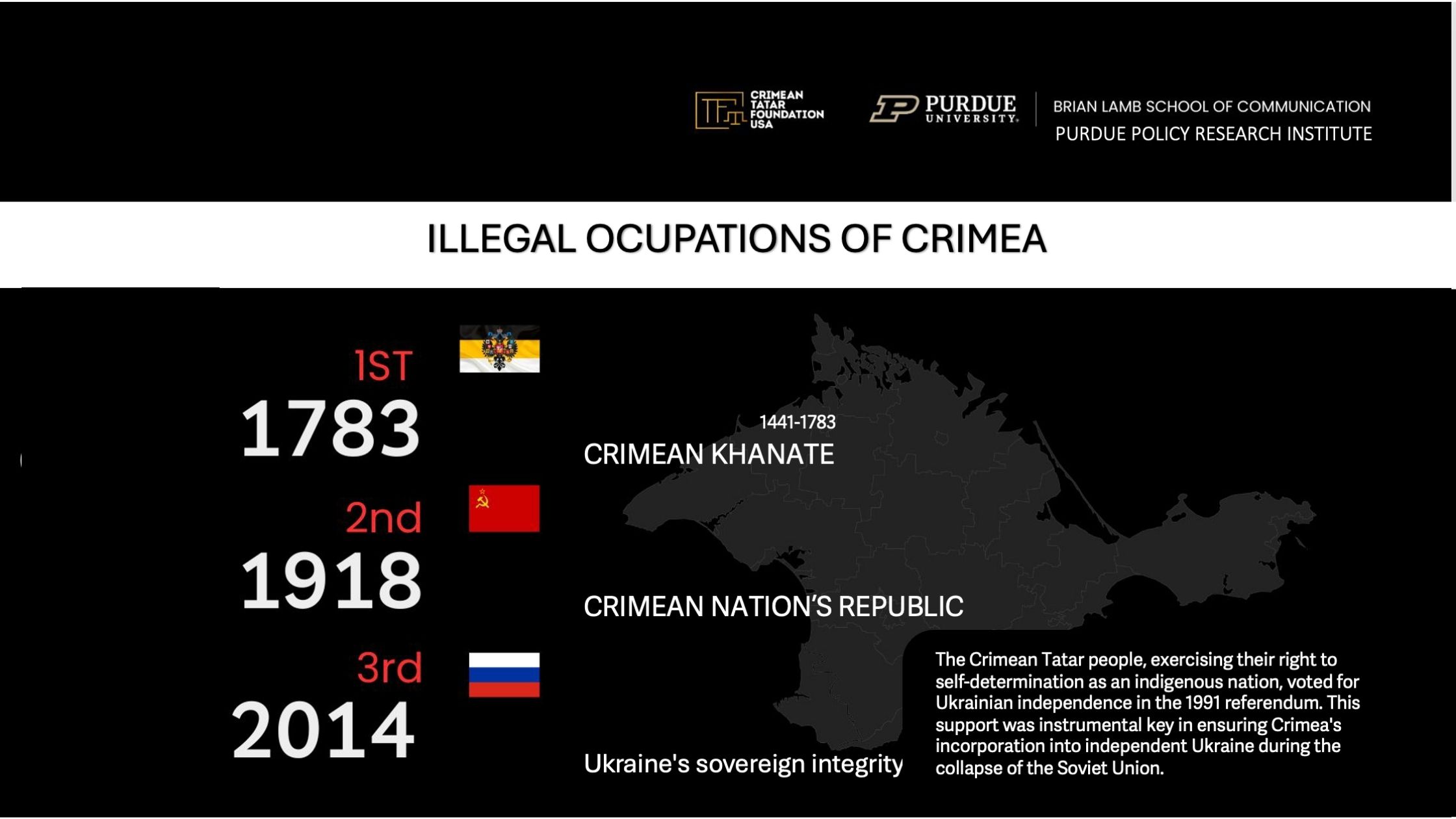
Historical records show that only thanks to massive Crimean Tatar support in the 1991 referendum did Crimea join Ukraine. According to research by Chervonna and Guboglo, without Crimean Tatar votes, Crimea would have remained part of Russia.
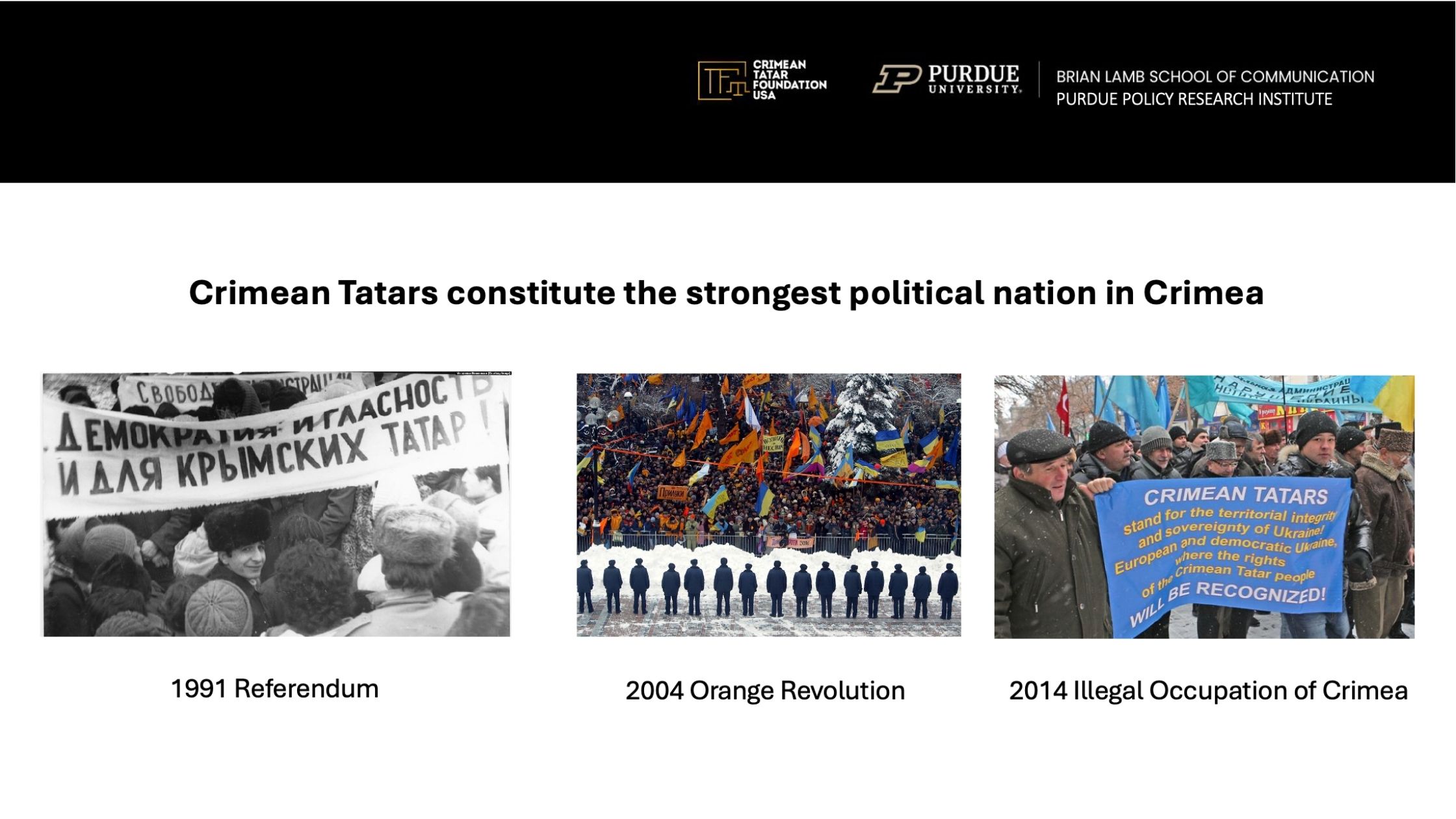
Crimean Tatars trusted their lives and freedom to Ukraine, choosing a democratic future and believing Ukraine would protect them. They actively supported the Orange Revolution in Crimea and mounted organized resistance in 2014 against Russian military forces. Their opposition proved crucial in preventing Russia from establishing legal justification for claims that Crimean residents welcomed russian intervention.
The evidence demonstrates that Crimean Tatars constitute the strongest political nation in Crimea – a fact Russia understands well, explaining why Russian regimes have consistently committed genocides against this people.
The Genocide Cycle
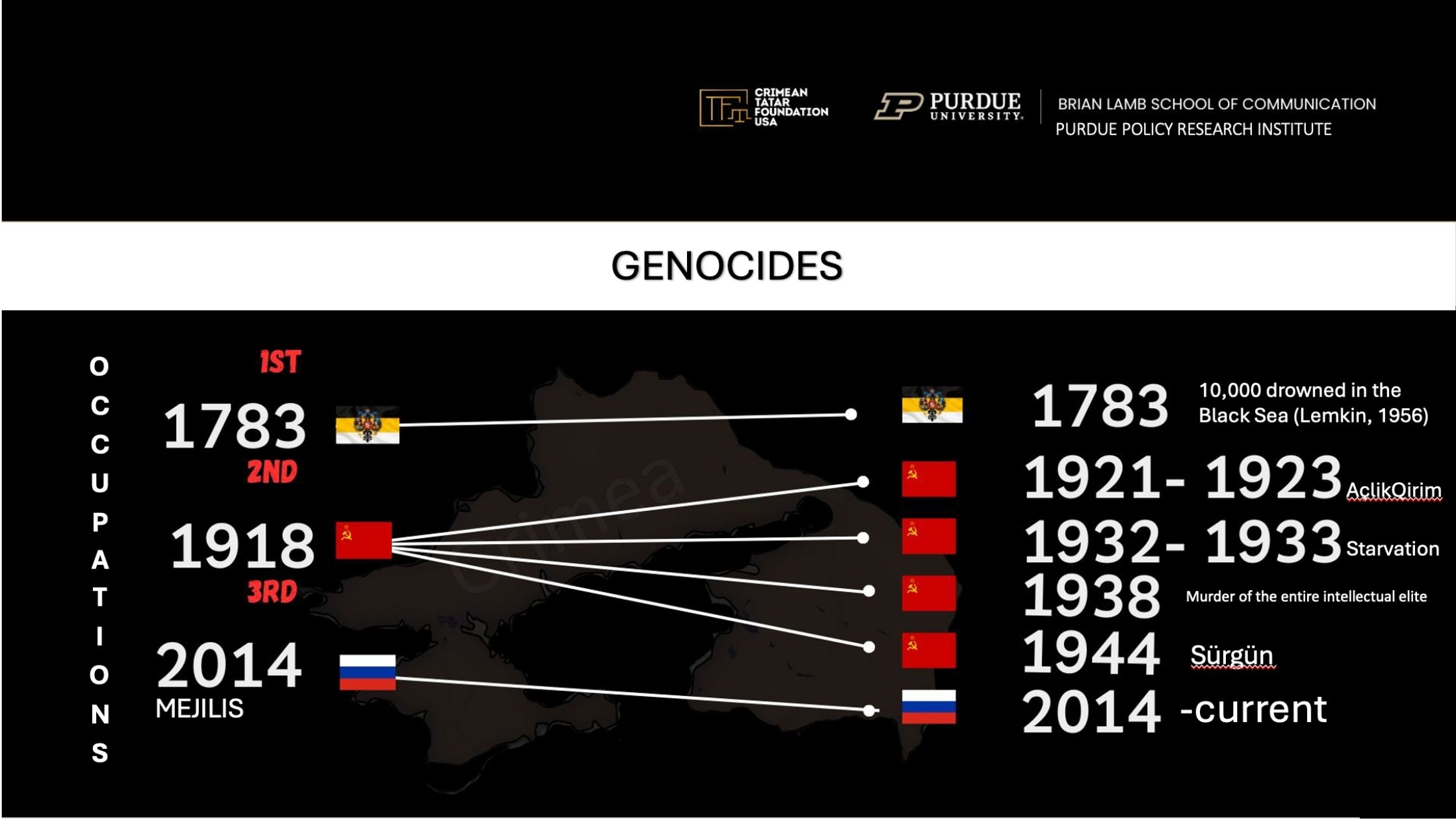
Each occupation without representative government has preceded genocide. The 1783 illegal occupation left the nation without its own government, leading to the immediate drowning of more than 10,000 Crimean Tatars in the Black Sea (R. Lemkin, 1956). The 1918 destruction of the Crimean Tatar Nation’s Republic led to the “Açlıq Qırım” genocide of 1921-1923. Then came the starvation of 1932-33—which according to travelers was even worse in Crimea – followed by the murder of the entire intellectual elite (1938). Before 1944, the absence of legal representation of Crimean Tatars preceded the “Sürgün” genocide, and in 2016 the prohibition of the Mejlis became preparation for a new genocide.
Life Under russian Occupation
Ukrainian citizens still live in occupied Crimea who reject the illegal occupation, adapting under impossible circumstances. Many Ukrainians and Crimean Tatars stay inside Crimea by different choice – some couldn’t evacuate due to economic constraints, family circumstances, age, or health conditions. Others stayed to protect there the only historical land, their property or care for elderly relatives.
These people live under constant pressure from the occupying regime. They’re forced to obtain Russian passports to access basic services. Their children are compelled to study under Russian curricula. Ukrainian and Crimean Tatar symbols are banned.
According to international human rights organizations, Crimean Tatars are especially vulnerable.
Evidence of Targeted Elimination
Statistical data from eleven years of illegal occupation demonstrates evidence of systematic targeting of Crimean Tatars. The FSB, Rosgvardiya, OMON, and militarized gangs like “Russkaya Obshchina” systematically raid homes of Crimean Tatar families with children in early morning hours – complete lawlessness that violates international law and the Geneva Conventions, specifically the inviolability of the home, prohibition of arbitrary arrest, and presumption of innocence.
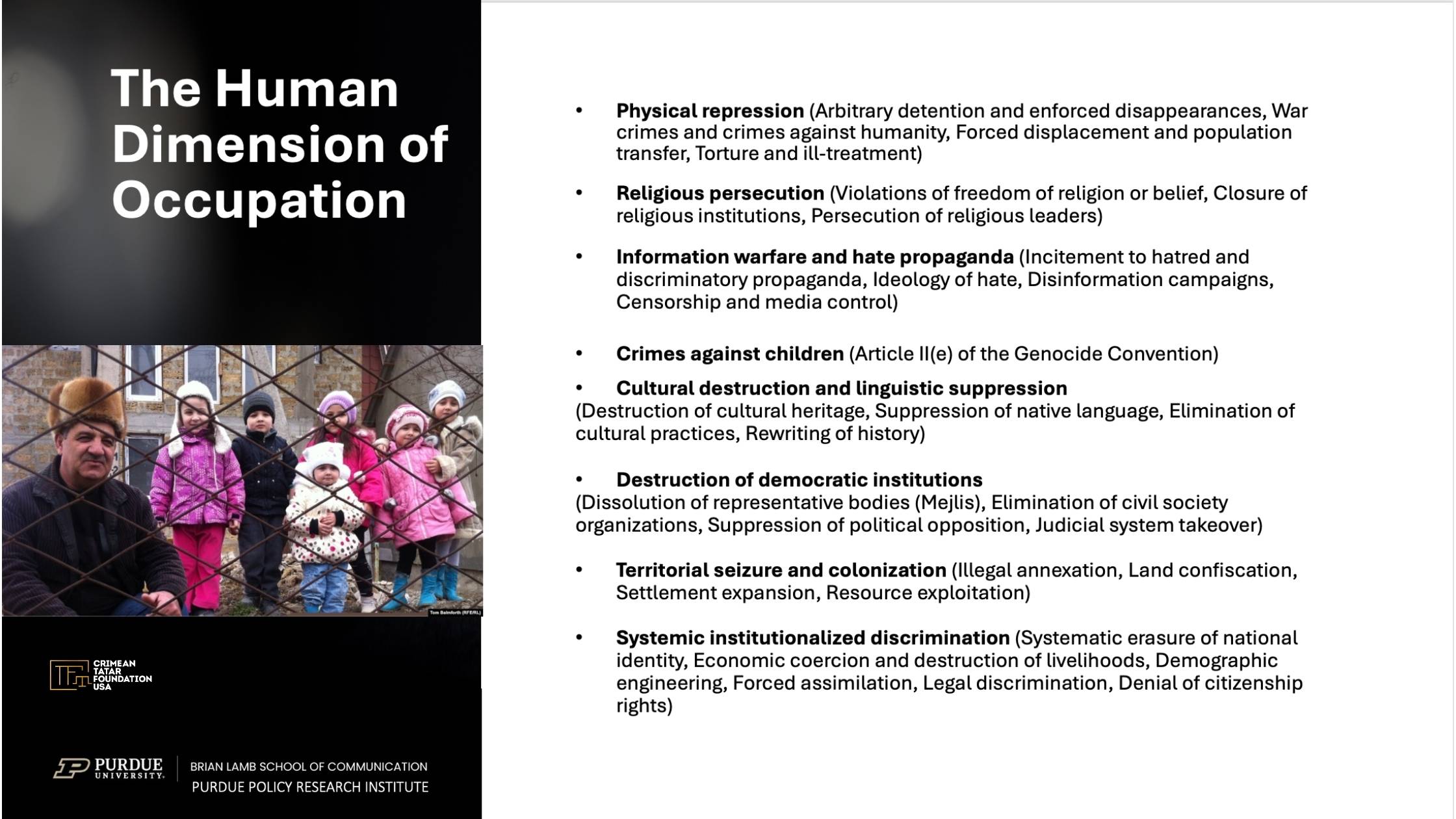
Without court decisions or legal grounds, Crimean Tatar men are imprisoned for up to 20 years. Entrepreneurs are persecuted their property illegally confiscated and men’s forcibly mobilized into Russian military formations – a war crime under international law.
Religious and Cultural Persecution
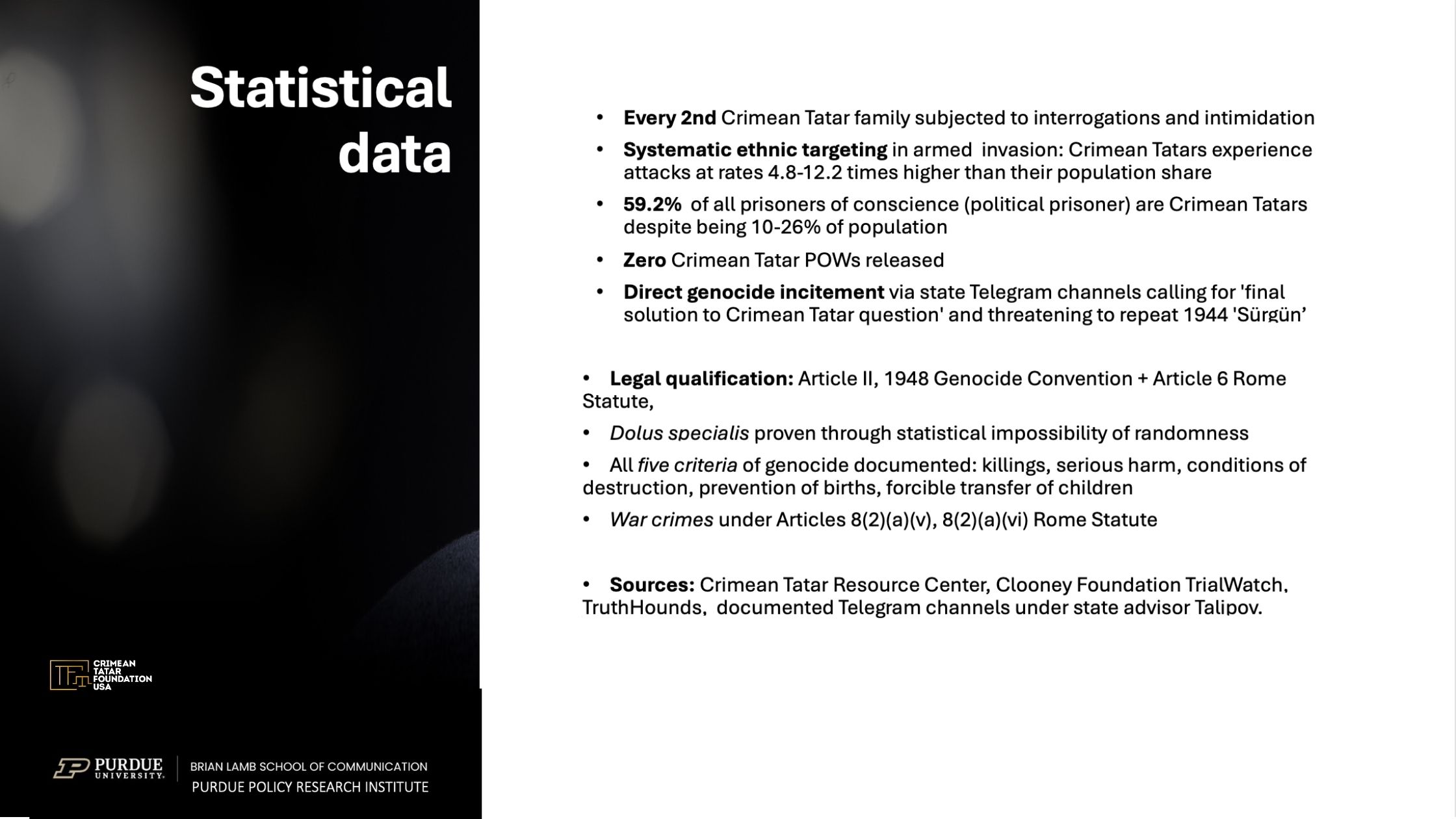
Religious persecution includes brutal armed attacks on Crimean mosques, systematic groundless arrests facing sentences up to 20 years, forced transport of prisoners of conscience to penal colonies thousands of miles from their families, and flagrant violation of religious freedom through bans on prayer in detention facilities and denial of access to religious literature. Reports indicate that Metropolitan Tikhon has issued directives on forced conversion to Christianity of all Muslims in Crimea.
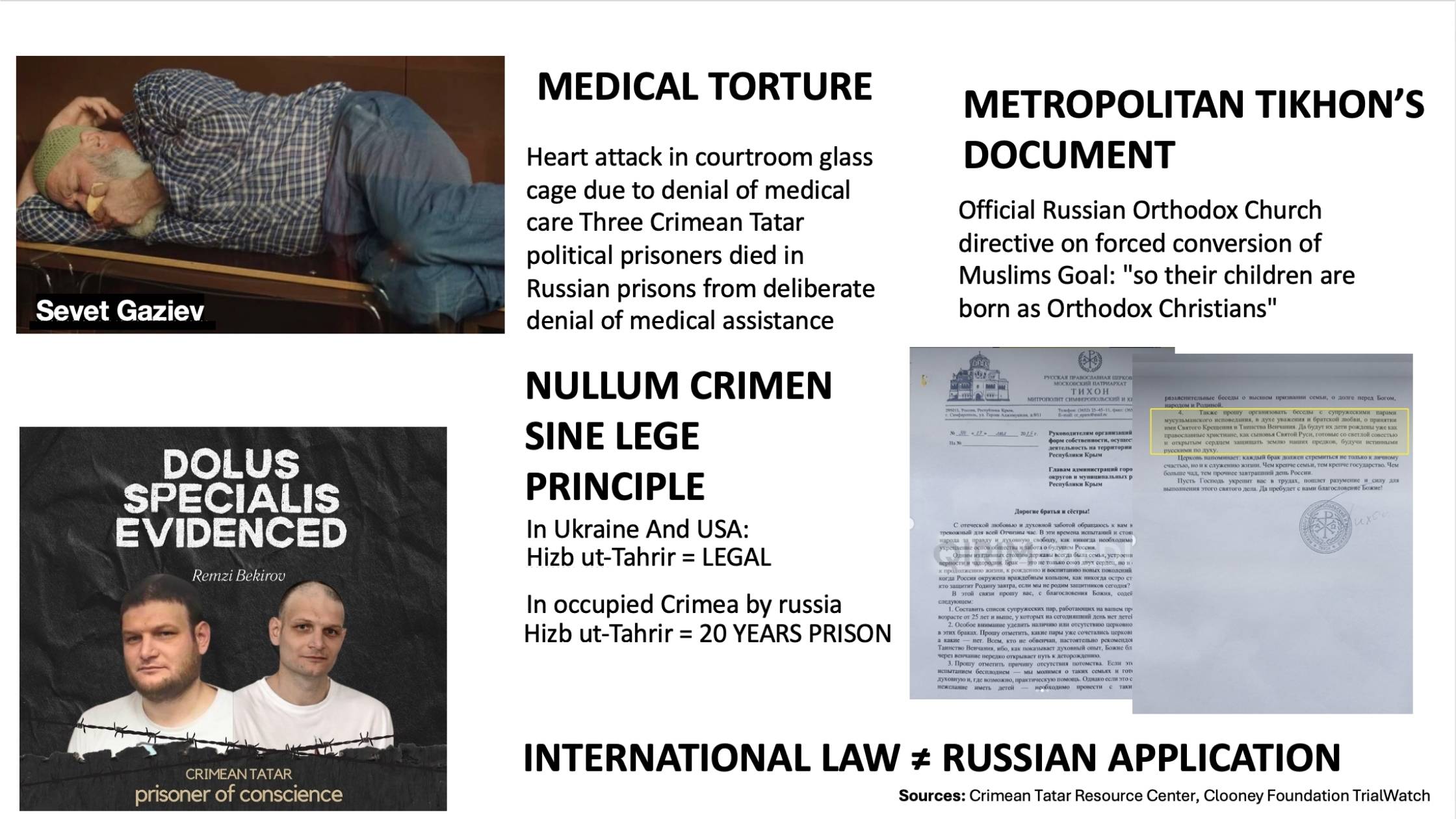
Occupiers continue to intensify russification and assimilation of Crimean Tatar children through systematic distortion of Crimean Tatar history and imposition of russian imperial narratives in educational curricula. In areas of compact Crimean Tatar residence, schools and kindergartens with Russian-language instruction are opened. Schools prohibit the use of national symbols, singing of the anthem, and observance of May 18th – the day of remembrance of the Crimean Tatar genocide.
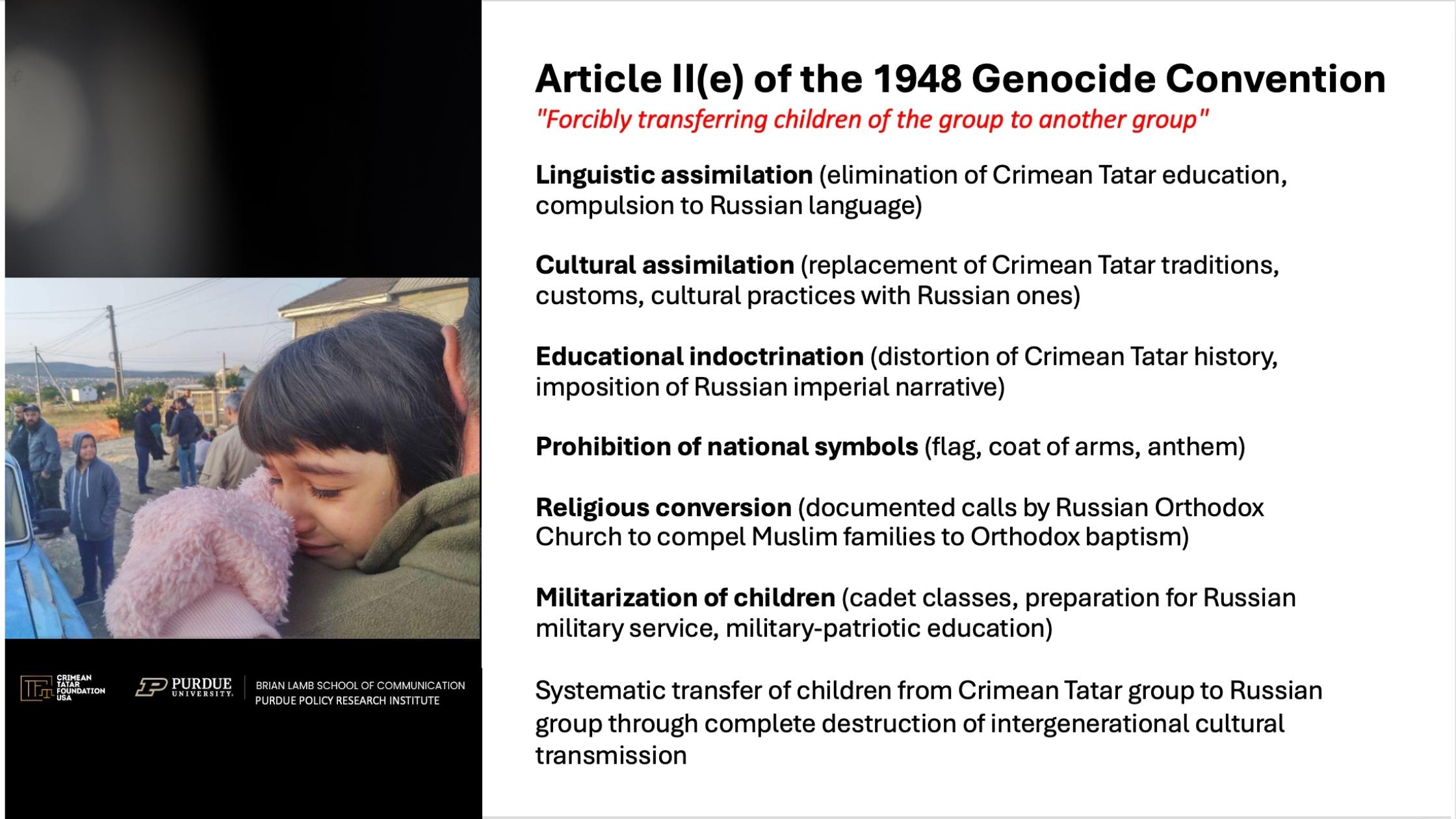
Increasingly, occupiers open cadet classes preparing students for admission to Russian military institutions, while children’s camps conduct intensive propaganda indoctrination.
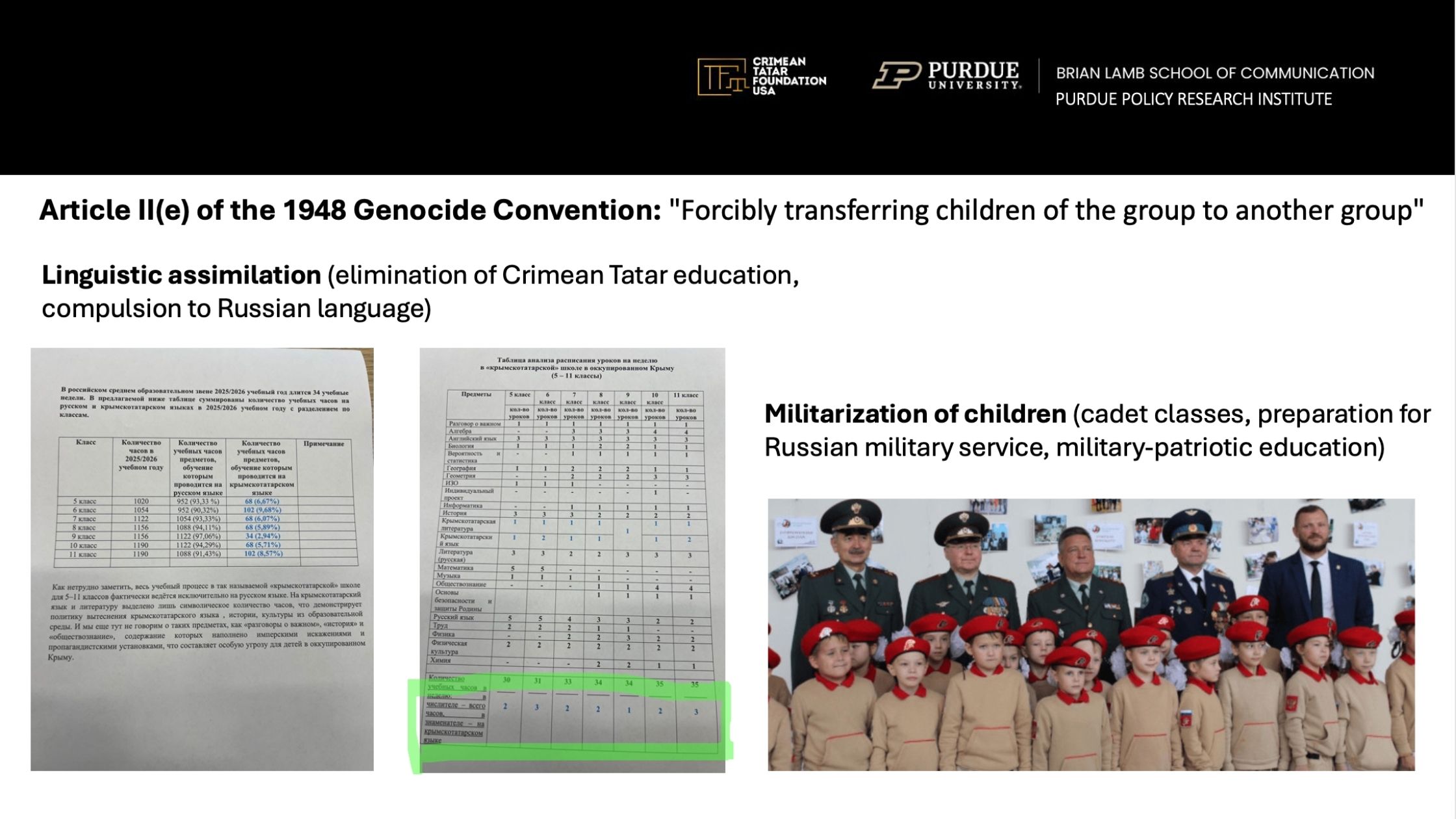
Documented Incitement to Genocide
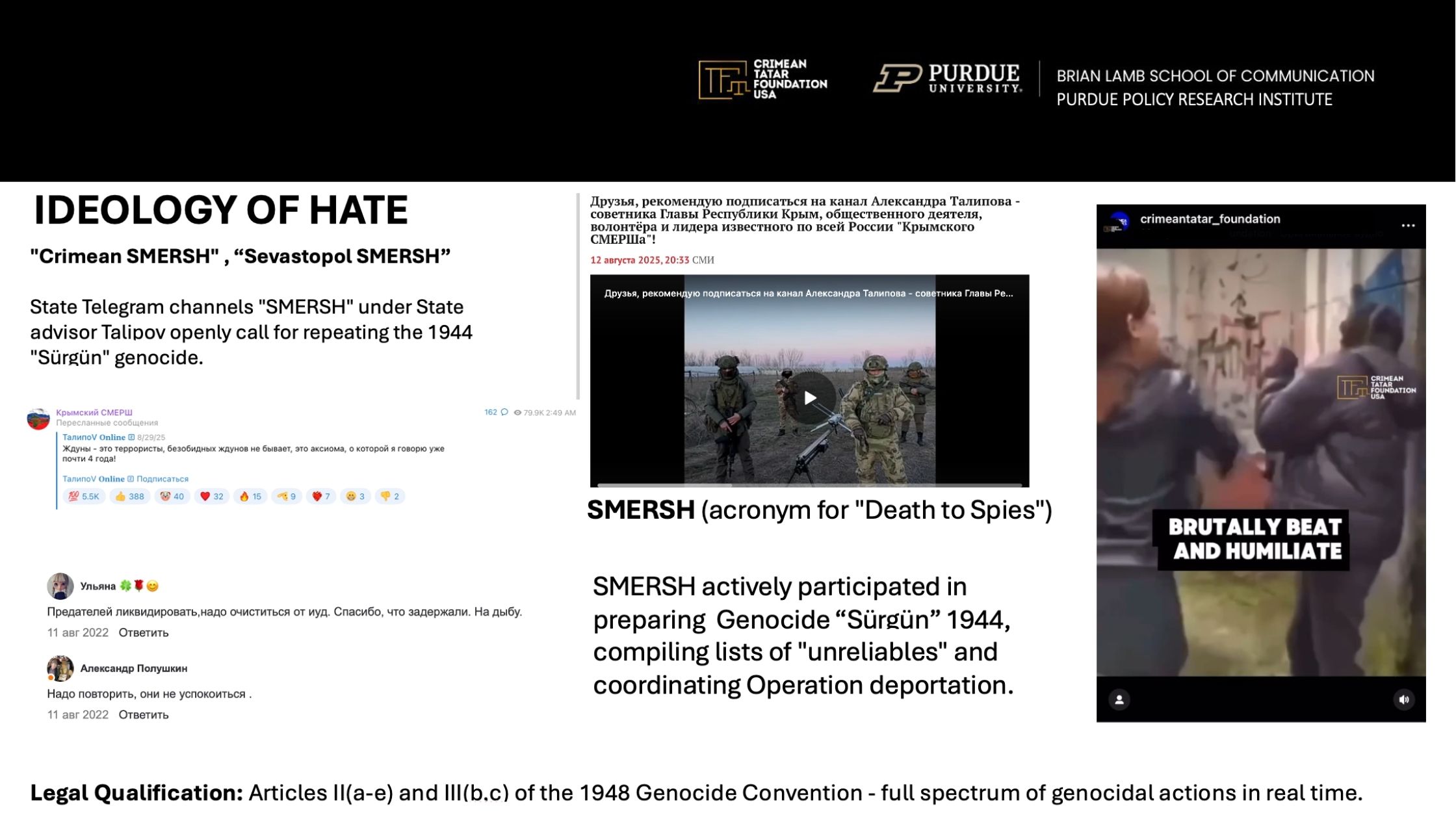
Systematic dissemination of information through Russian state social media platforms has been documented, particularly through Telegram channels “SMERSH Sevastopol” and “Crimean SMERSH” under the leadership of Alexander Talipov, state advisor to the head of the Crimean occupation administration. These platforms spread direct calls for genocide against Crimean Tatars, including threats of physical extermination and forced expulsion from their ancestral land, referencing a repetition of the 1944 “Sürgün” genocide.
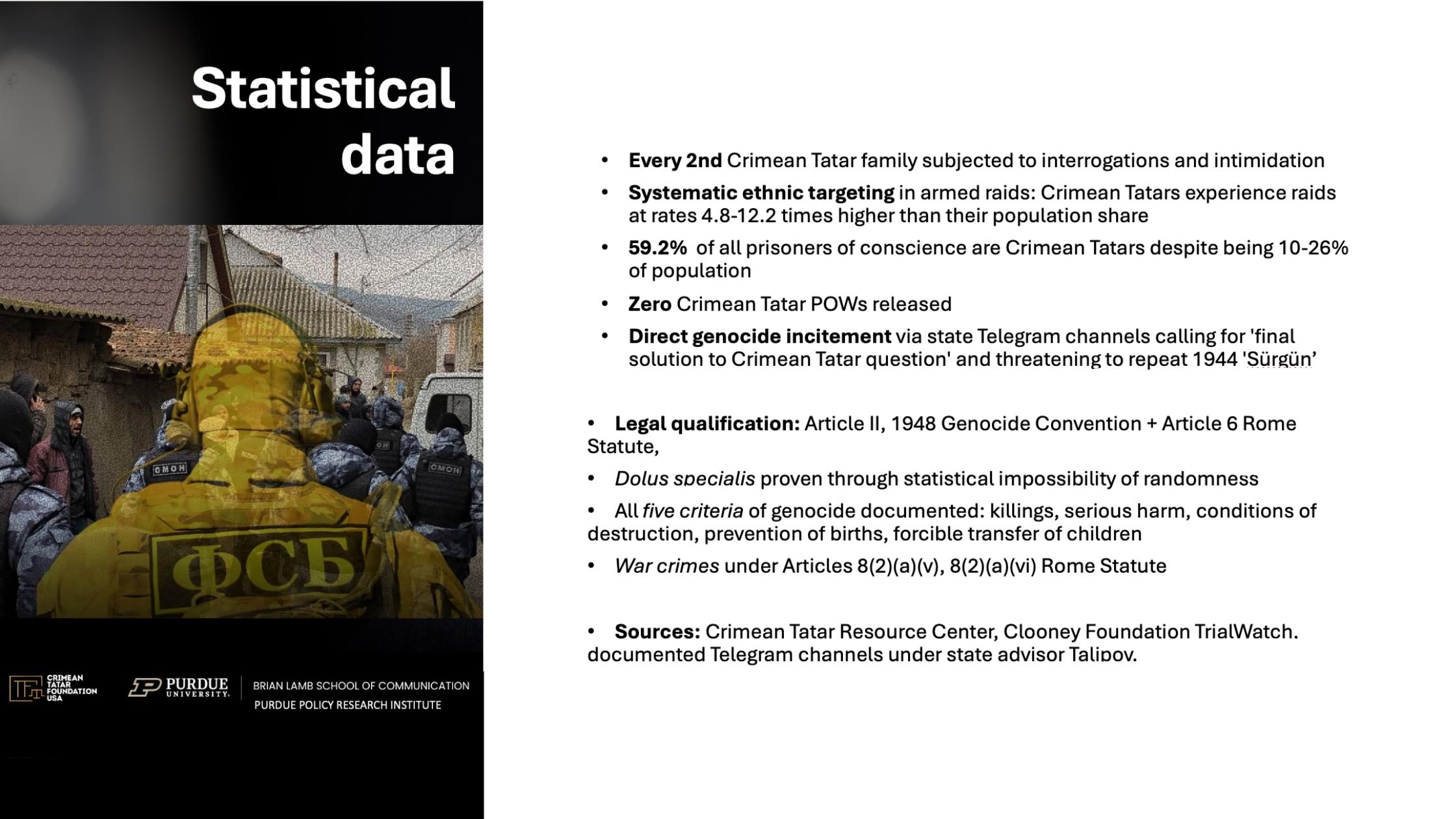
These actions by officials of the Russian Federation qualify as direct incitement to genocide in accordance with Article III(c) of the 1948 Convention and Article 25(3)(e) of the Rome Statute, as well as dissemination of ideas of racial superiority under Article 4 of the International Convention on the Elimination of All Forms of Racial Discrimination. The organized nature and connection to Russian state institutions create grounds for immediate international criminal prosecution.
Cultural Genocide in Progress
Since 2014, according to Crimean Tatar Foundation USA data, there has been systematic removal of Crimean Tatar literature from public libraries—part of large-scale cultural genocide. Under the guise of “restoration,” Russian occupiers are destroying the famous Khan’s Palace in Bakhchisarai, listed by UNESCO in 2003. Simultaneously, memorial monuments to victims of the 1944 genocide are being dismantled, historic mosques and Crimean Tatar cemeteries systematically destroyed, archaeological artifacts removed to Russian museums, and Crimean Tatar toponyms renamed.
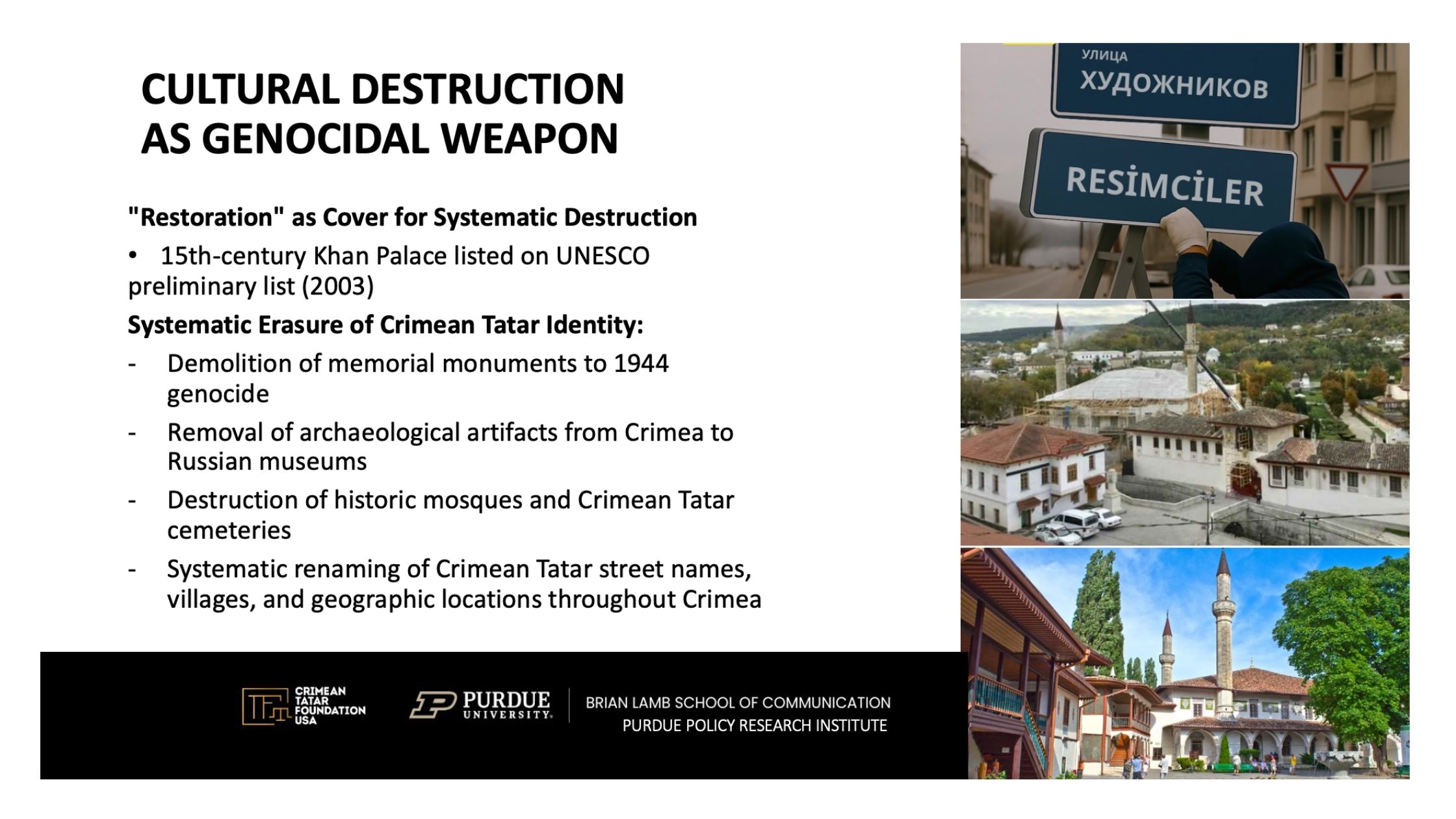
The International Stakes
Ukraine officially owns Crimea according to all domestic laws, international law, and the international community—numerous declarations, resolutions, decisions, and leaders’ statements confirm this fact. The United Nations declaration clearly states that Crimea is Ukrainian territory.
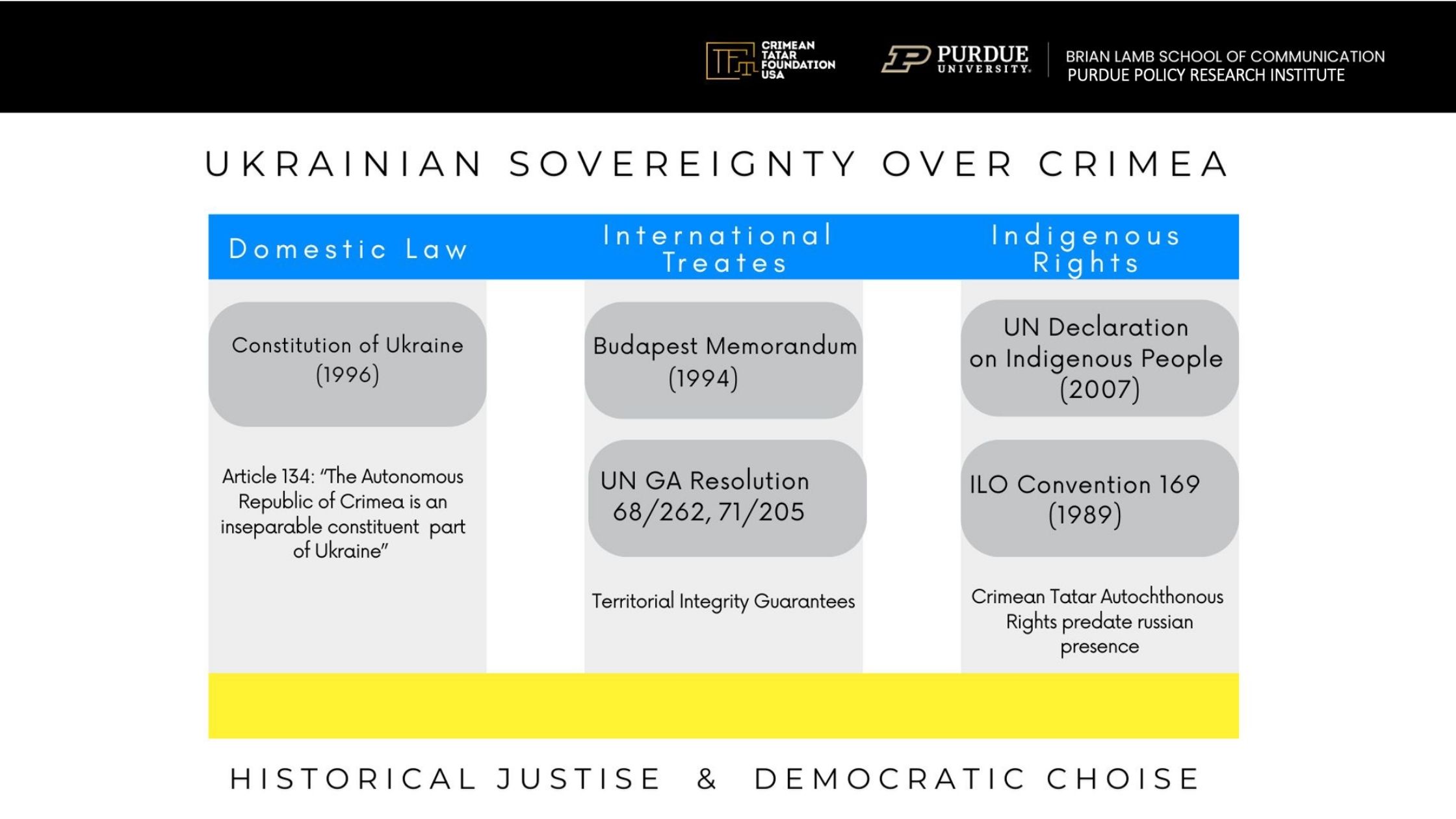
The loss of Crimea, much less conscious renunciation of ownership of Crimea as Ukrainian territory, calls into question a fundamental principle of the international security system established after World War II: the inviolability of borders. If this precedent stands in Ukraine, others around the world are already waiting—China regarding Taiwan, potential conflicts in the Balkans, Africa and beyond.
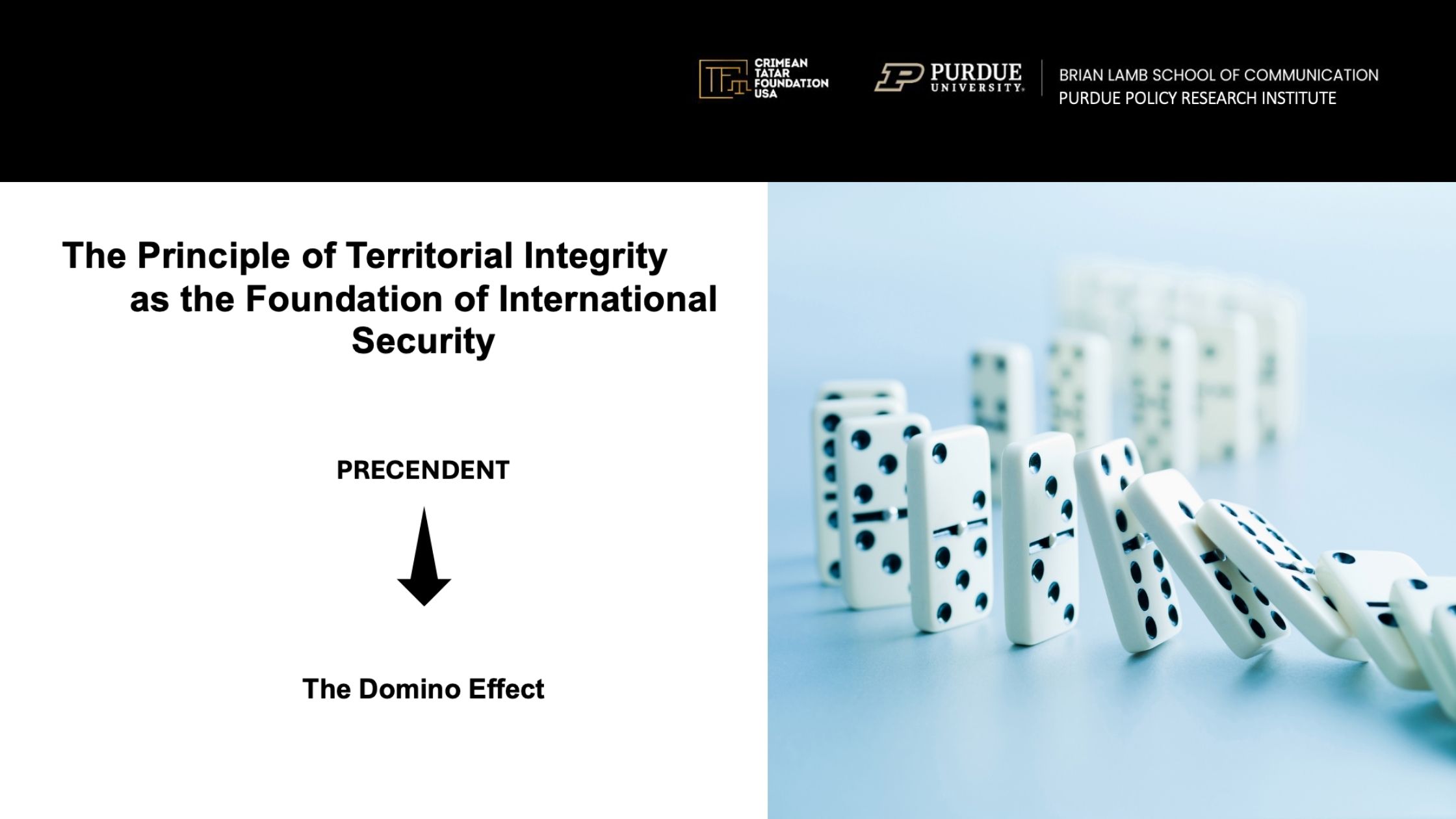
Russia could obstruct Ukraine’s membership in strategic international institutions, including NATO. Even if alternative security guarantee systems are built, without full territorial integrity, Ukraine won’t achieve co-equal status in this architecture. Unable to defend all its territory, Ukraine risks being treated not as a sovereign equal but as an object rather than subject of international decision-making. Ukraine’s national interests require full international recognition as an equal partner—subordinate status contradicts these legitimate aspirations.
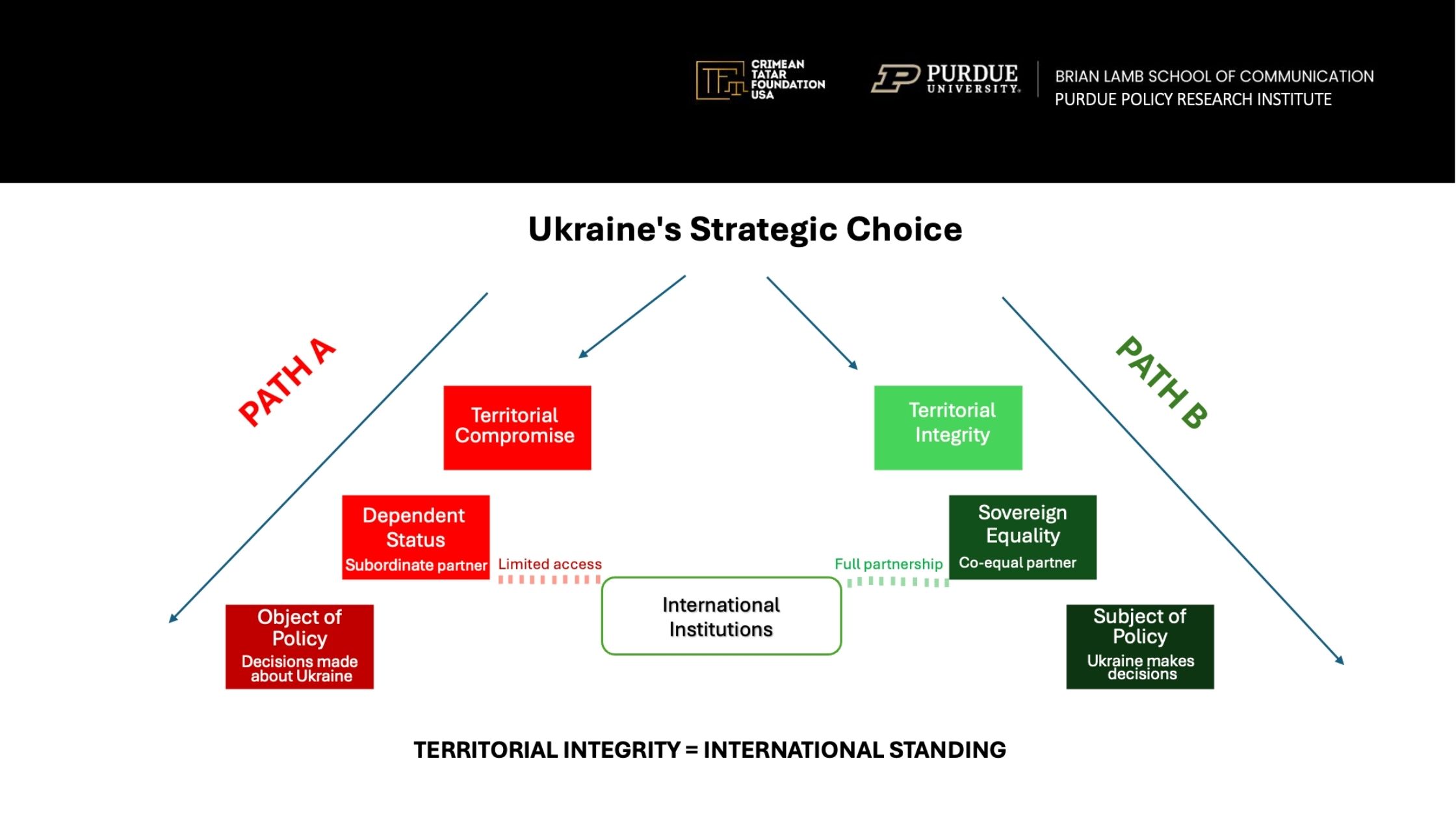
The Continuing Military Threat
Crimea has been transformed into a military staging ground for strikes against Odesa and other Ukrainian territories—a threat that will perpetually loom. Russia’s control over Crimea threatens not only Ukraine but the entire security architecture of the Black Sea region, including NATO.
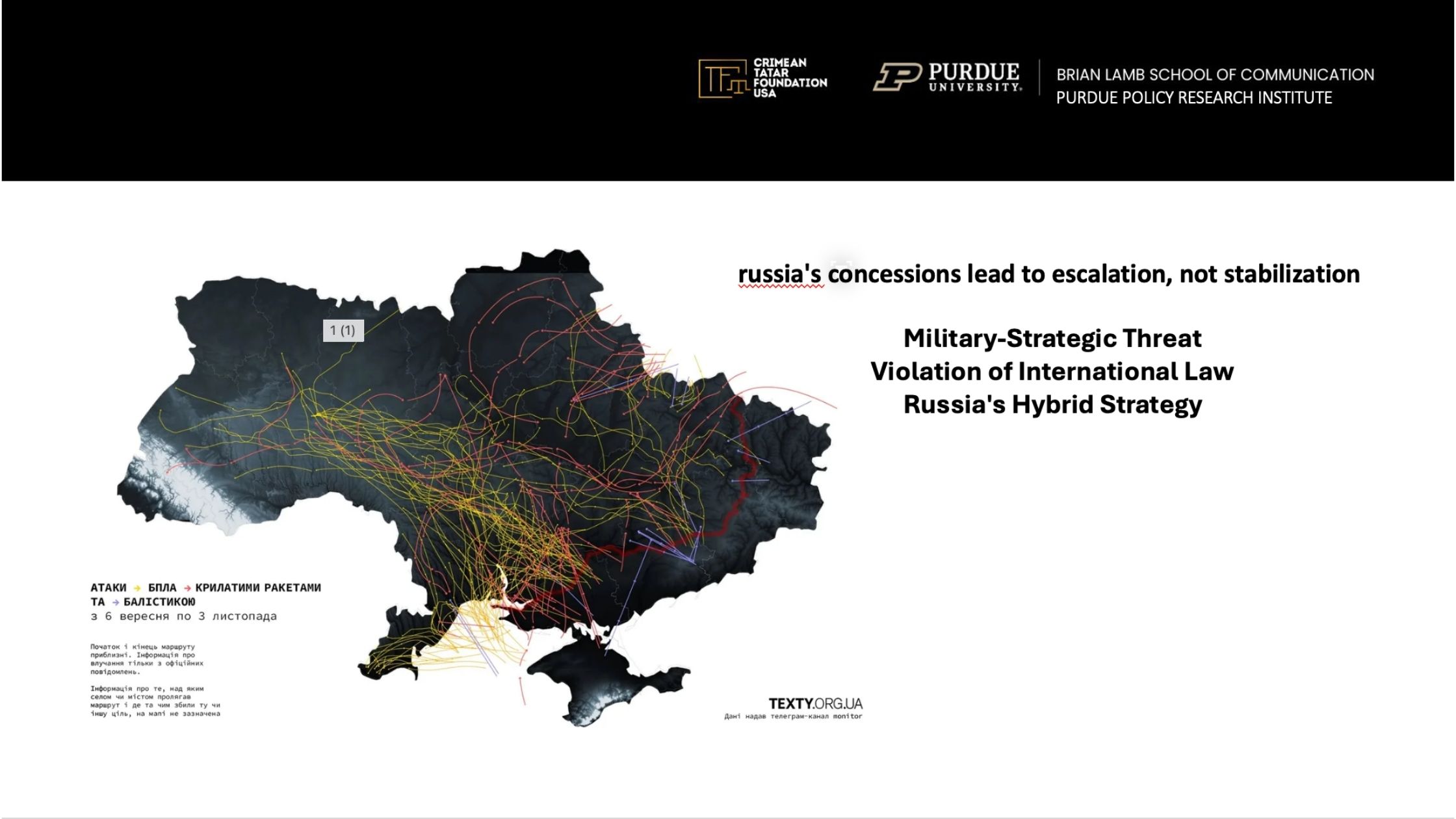
If Russia’s strategy succeeds – if Ukraine regains eastern territories while Crimea remains under Russian control – Moscow will use Crimea as a bridgehead to work on those eastern territories, eventually engineering “popular movements” for new “referendums.” This classic hybrid strategy of maintaining one bridgehead for constant pressure destabilizes Ukraine’s territorial integrity, security and sovereignty.
The Strategic Solution: National-Territorial Autonomy within Ukraine
Russia claims before the entire world that Crimea is originally Russian territory. Ukraine’s argument rests not only on restoring territorial integrity but has every opportunity to deploy another powerful element: the issue of indigenous peoples.
Crimean Tatars have repeatedly been allies of a democratic, independent, law-based Ukrainian state. Any struggle for democracy in Ukraine found reliable support among them. This is precisely why creating Crimean Tatar national-territorial autonomy within Ukraine represents a strategically important decision.
Ukraine must declare before the world: on the territory of the Crimean Peninsula exists a self-determined Crimean Tatar nation who exercised their self-determination within the Ukrainian state. This question is definitively closed. Any attempts by Russia to assert an alleged “Russian Crimea” are shattered by this fact.
Alongside assertions that according to the Constitution, interstate agreements, and international law Crimea belongs to Ukraine, this position is strengthened: Crimea is the territory of the autochthonous Crimean Tatars who chose Ukraine.
But declaring this right is insufficient. Resolving this issue through creating Crimean Tatar autonomy will significantly strengthen Ukraine’s position – filling the “empty cell” so enemies cannot place their own narrative there. The autonomy of Crimean Tatars within Ukraine becomes unshakeable proof that Crimea is not Russian land but the territory of an indigenous people who chose democratic Ukraine as their state.
Thus, the question of Crimean Tatar autonomy within Ukraine is not only justice for an indigenous people but also a powerful strategic weapon in the struggle for Crimea’s liberation and preservation of Ukraine’s territorial integrity.
